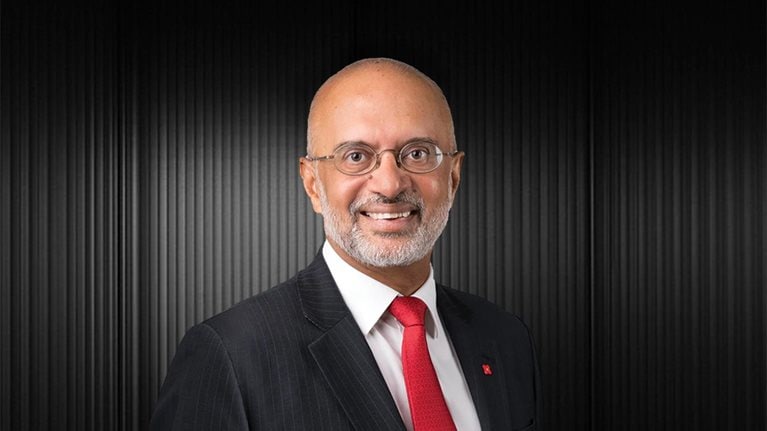What does it mean to grasp the CEO Moment?
To confront this new challenge [the pandemic], CEOs have in many ways fundamentally shifted how they lead.
They’ve sought to unlock bolder aspirations, and to elevate the way they show up—what we call their “to-be” form just as much as their “to-do”—when it comes to operating models. They seek to fully embrace stakeholder capitalism, and to harness the full power of the networks in which CEOs participate.
These are the ways that have characterized the coronavirus pandemic from a business leadership viewpoint thus far. The question, or indeed the challenge, is to continue in these ways in the future. After all, this is a once-in-a-generation opportunity to consciously evolve the very nature and impact of the CEO role.
Indeed, if a crucial mass of CEOs chooses to operate, to behave, and to lead differently, then this CEO moment could become a CEO movement—one that could create better, higher-achieving, more purposeful, more human, and better-connected leaders.
How CEOs can better lead their organizations in a post-pandemic world
Tangible changes in behavior are needed to drive progress: more deliberate use of time, in part prompted by a lack of travel; improved decision making; and improved execution within the CEO’s leadership groups and across an organization’s operating model itself.
To recalibrate operating models going forward, CEOs should ask: “How have we worked together in this COVID moment to enable the impossible during this pandemic? What learning and new muscles should we bring into the organization for the future?”
In conjunction with all of this, how a CEO chooses to lead entails elevating what we call “to-be” to the same level as “to-do”. In a moment of crisis, many leaders are turned to by their colleagues who expect them to display not only humanity and empathy, but guidance and calm in the face of uncertainty and anxiety.
As a result, CEOs are thinking ever more consciously about what they want to be, and that is yielding results in terms of connection and motivation. Leaders should continue to show up differently, and take notice of how the members in their teams show up as well.
Showing up differently means deliberately choosing how to show up. CEOs, in many ways, are opening up far more to their organizations. One CEO said to me, “If you don’t love your team and can’t show your love to the organization in a time of crisis, you shouldn’t be a CEO.”
Love. Perhaps in the past, that’s not been a word associated with CEOs. It certainly does now need to be associated with CEOs in this CEO moment. So to recalibrate how CEOs show up going forward, they should ask: “What qualities am I bringing to begin, and to steer, and to lead? How should I show up today in a way that I can continue to show up in the future? How should I hold myself accountable for doing so?”
Also, CEOs need to take notice of how the members in their senior team show up, and recalibrate what they expect of those members. This is not just a CEO task; the importance of “being” has come equally to the fore for other leaders.
Job descriptions often list skills and experience, but the pandemic highlights the importance of shifting to talk about character attributes as well. To make this shift permanent, CEOs together with their chief human resources officers, should be asking: “What will I look for differently in the leaders I select? What actions should I take in the near term to reinforce which attributes will be of elevated importance going forward? And how can these attributes be hardwired into our company’s operating model?”
The role of stakeholder capitalism in the CEO Moment
The third element of the CEO moment that I think is essential to making this a CEO movement, is to fully embrace stakeholder capitalism. It’s a simple notion: The idea is that companies have obligations to shareholders that should not come at the expense of other stakeholders, employees, customers, the community, suppliers, and society at large.
The pandemic has highlighted the interconnectedness of business and the world in which we as business leaders operate. Moving stakeholder capitalism from an idea discussed at conferences to a day-to-day, decision-making reality is now the task for CEOs around the world.
Tending to multiple stakeholders and managing for the long term is not only good for stakeholders, it also makes business sense. The exposure to customers and shareholder-related lists are minimized, and new opportunities present themselves.
To fully embrace stakeholder capitalism, CEOs should continue to check and validate what they really believe and take action accordingly. CEOs are being asked to make decisions that, in many ways, they’ve never been trained for: tough decisions with profound human consequences. For example, deciding when it is safe to return to the office at scale.
CEOs should reflect on the following: What stakeholders should I explicitly recalibrate and refocus? How should I convince my shareholders that the long-term benefits of shifting our company’s focus more than outweighs the near-term costs?
CEOs must take action—take action to recalibrate interest, to reset expectations, and to measure progress.
Would you like to learn more about the Future of Asia?
Leveraging the CEO network to become better leaders
CEOs are talking to each other much more, and seeking to do so at a greater rate. After all, there is no guidebook to handle the crisis that we are now facing.
The best way to handle it is to seek advice and counsel from those trying to do the same thing: to lead in a period of crushing uncertainty. This requires investment and further relationship-building with other CEOs, leveraging networks to tackle a broad set of issues.
Investing in relationships with CEOs takes many forms. It means leveraging interactions in the future, finding ways to engage, and asking oneself: “What networks would I like to be a part of, and how can I make myself a part of them?” It means inviting those networks in to help with decision making.
We’ve seen CEOs work with traditional competitors or rivals in order to tackle the challenges presented by the crisis, always doing so within legal boundaries. Networks have a unique potential to enable the CEO movement more broadly; challenging and supporting peers to aim more highly, and ensuring the issues are tackled with conviction and at scale.
Ask yourself: “What issues would most benefit my business from advice from my peers? What societal issues can we work on together to make a difference? And what issues will I take personal leadership for and convene those around me?”
How COVID-19 has reshaped organizational operations
The pandemic has indeed highlighted the need for companies to enhance flexibility and speed, and I think doing that entails several actions. First and foremost, it entails rethinking how work gets done, the ways of working, re-imagining structures, and of course, reshaping talent. They don’t have to be the way they were.
Rethinking ways of working is all about speeding up and delegating decision making. I think the coronavirus has been a moment when there hasn’t been time for the bureaucracy to kick in.
It’s resulted in fewer meetings, with fewer decision makers, and faster decision making. I know I’ve been involved in meetings every morning at 8AM, working through the issues that we see, resolving them quickly, and moving on. And that’s been true of company after company, CEO after CEO.
It’s also been a moment when new partnerships have been formed in order to speed up; reaching outside the organization to find people that can unblock an obstacle and make it happen. We saw that, for example, in the rush to develop and build ventilators early in the pandemic.
It also entails reimagining structure, and finding ways to flatten the organization. A speedy organization has more people taking action and fewer people feeding the bureaucracy beast, and fewer people briefing each other. The hierarchy has been watered down.
So how do you shift from thinking about hierarchy to really thinking about a network of teams, not a hierarchy of bosses? It also entails unleashing nimble, empowered teams. Companies that launched agile transformations pre the COVID-19 pandemic have performed better in our view.
And they performed better because they’ve had the agility to react quickly to a changing circumstance—one that was never envisaged—and to make it successful. Of course, the successful, the more agile, the more fast-moving companies have also been characterized by being able to find ways to make hybrid working work.
I think hybrid models can unlock significant value. But I don’t think all of our work is going to go online and all of it’s going to be done remotely. I think you’re going to find 5 percent is fully in-person, 5 percent is fully remote, and a vast majority will be some combination of the two.
Finding ways to make hybrid-work work is a key part of responding, as I said, to this issue of moving faster. Of course, it also entails reshaping talent; finding tomorrow’s leaders and bringing them to the surface, giving them responsibility, and helping them learn in different ways. So I think those are all aspects of the criticality of making a difference in this moment.
Why fast-tracking diversity is a win for organizations
The reality is the pandemic does not hit all people equally. It disproportionately impacts the most vulnerable. And I think that’s been one aspect of how companies in this COVID-19 era have sought to change in order to achieve diversity. They recognize something we show in a lot of our work, which is diverse companies perform better.
Companies that are gender diverse perform 25 percent better when it comes to the chance of outperforming their peers. Companies that are ethnically diverse perform over 30 percent better when it comes to the likelihood of outperforming their peers.
Those numbers matter. So I think that’s how it starts, this notion of changing the way you look at diversity, by recognizing it’s a business imperative, not just a moral imperative. It’s a business imperative. Then I think you look at the actions that are going to make a difference.
And you say, if the pandemic is disproportionately impacting women, for example, because they are the primary caregiver, then how do you make sure that you have caregiving support? You fund the provision of childcare; you have policies to encourage and support spouses going to work remotely and then back at their offices. You introduce family-friendly policies.
It’s those kinds of steps that are so essential, and I believe that we’re seeing a lot of companies around the world do just that. They’re finding ways to put support in place. Because they recognize that this is not just a good thing to do, it is something that has a tangible, objectively measured impact on business performance. And that’s why I think diversity can indeed flourish in this moment—because now, more than ever, we need to provide all the tools that allow companies to outperform.


